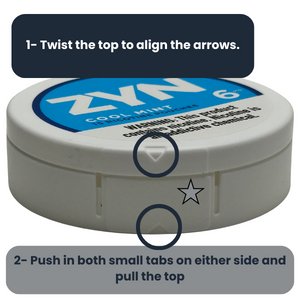Black mould on silicone sealant can be a frustrating problem, but you can easily tackle it with the right approach. Start by mixing equal parts of water and vinegar, then apply the solution to the affected areas. Scrubbing gently with a brush will help lift the mould away without damaging the silicone.
Regular maintenance and quick action can keep your bathroom or kitchen looking fresh and mould-free. In this guide, we’ll dive into how to remove black mould from silicone sealant effectively, helping you restore that clean, bright look you love. Say goodbye to stubborn mould and hello to a healthier home.
How to Remove Black Mould from Silicone Sealant
Black mould can be a troublesome issue, especially in areas where there is moisture, like kitchens and bathrooms. Silicone sealants are often used to keep these spaces watertight, but they can also become a breeding ground for mould if not properly maintained. Understanding how to remove black mould from silicone sealant not only improves the aesthetics of your home but also contributes to a healthier living environment. In this article, we’ll explore effective methods, tips, and preventative measures to tackle this unpleasant problem.
Understanding Silicone Sealant and Mould Growth
Before diving into the cleaning methods, it’s helpful to know why mould grows on silicone sealant in the first place. Silicone sealants are flexible, water-resistant materials commonly used in bathrooms and kitchens. However, their properties can create an environment conducive to mould if not maintained properly. Here’s how mould takes hold:
– **Moisture Accumulation**: Humidity and moisture are the primary culprits for mould growth. Areas that don’t dry out quickly after use are more susceptible.
– **Poor Ventilation**: Rooms without enough airflow can trap moisture, leading to mould.
– **Organic Material**: While silicone itself doesn’t provide a food source for mould, dust, soap scum, and other organic materials can accumulate and encourage mould growth.
Gathering Your Supplies
Before you begin the cleaning process, gather all the necessary supplies. Here is a quick list:
- Protective gloves
- Face mask (to avoid inhaling mould spores)
- Scrub brush or an old toothbrush
- Plastic scraper or putty knife
- Cleaning solutions (bleach, vinegar, or commercial mould remover)
- Sponge or cloth
- Spray bottle
- Water
These items will help you effectively remove the mould and protect yourself during the process.
Cleaning Methods for Removing Black Mould
There are several methods to remove black mould from silicone sealant. Each method has its pros and cons, depending on the level of mould infestation and personal preference.
Using Bleach
Bleach is a powerful cleaning agent that can effectively kill mould and other fungi. Here’s how to use it:
– **Make a Bleach Solution**: Mix one part bleach with three parts water in a spray bottle.
– **Spray the Affected Area**: Spray the solution directly onto the mouldy silicone. Make sure to cover all mouldy patches.
– **Let it Sit**: Allow the solution to sit for 10-15 minutes. This waiting time gives the bleach a chance to penetrate and kill the mould.
– **Scrub the Area**: Use your scrub brush or toothbrush to scrub the mouldy area gently. Be careful not to damage the silicone.
– **Rinse Thoroughly**: After scrubbing, rinse the area well with water to remove any bleach residue. You can use a damp cloth or sponge for this step.
– **Dry the Area**: Ensure that the area is dried completely to prevent mould from returning.
Using Vinegar
Vinegar is a natural and non-toxic alternative to bleach. It has mild antibacterial and antifungal properties which help combat mould effectively. Here’s how to use it:
– **Pour Vinegar into a Spray Bottle**: Use white vinegar for this task.
– **Apply Vinegar**: Spray the vinegar directly onto the mouldy silicone. Make sure to saturate the affected area.
– **Let it Sit**: Allow the vinegar to sit for at least 30 minutes. This gives it enough time to kill the mould.
– **Scrub the Mould**: Use the scrub brush to remove the mould from the silicone. The vinegar should loosen the mould, making it easier to scrub away.
– **Rinse with Water**: After scrubbing, rinse the area with water.
– **Dry Completely**: Dry the surface well to avoid further mould growth.
Using Commercial Mould Remover
If the mould is particularly stubborn, you may want to consider a commercial mould remover. These products are designed specifically to tackle mould and mildew. Here’s how to use them:
– **Read the Instructions**: Always follow the manufacturer’s instructions on the packaging.
– **Apply the Product**: Spray the mould remover directly onto the mouldy areas of the silicone sealant.
– **Let it Sit**: Allow it to work as directed, usually for 10-15 minutes.
– **Scrub and Rinse**: After the dwell time, scrub the area and rinse it thoroughly with water.
Removing Silicone Sealant
Sometimes, the mould may be deeply embedded in the silicone sealant. In such cases, removing and replacing the silicone may be your best option. Here’s how to do it:
– **Cut the Sealant**: Use a plastic scraper or a utility knife to carefully cut along the edges of the silicone sealant. Be cautious not to damage the surfaces around it.
– **Peel Away the Sealant**: Once you’ve cut around the silicone, you can start peeling it away. Use the scraper to lift it off if needed.
– **Clean the Surface**: After removing the old silicone, clean the surface with a mixture of vinegar and water to ensure no mould spores remain.
– **Apply New Silicone**: Once the area is clean and dry, apply fresh silicone sealant. Make sure to follow the instructions on the silicone tube for the best results.
Preventing Future Mould Growth
Now that you know how to remove black mould from silicone sealant, it’s essential to prevent it from returning. Here are some effective strategies:
Improve Ventilation
Proper ventilation is crucial in reducing humidity. Here are some tips:
– **Install Exhaust Fans**: Use exhaust fans in bathrooms and kitchens to help remove moisture.
– **Open Windows**: Open windows when possible to promote airflow, especially after cooking or showering.
– **Use Dehumidifiers**: If humidity is a significant issue, consider using a dehumidifier in rooms prone to dampness.
Regular Cleaning
Staying on top of cleaning can prevent mould from forming. Schedule regular checks and follow these tips:
– **Wipe Down Surfaces**: After showers or baths, wipe down the silicone sealant with a dry cloth to remove moisture.
– **Clean with Vinegar Regularly**: Use vinegar as a preventive measure. Spray it on the silicone every few weeks to inhibit mould growth.
Choose the Right Sealant
If you’re applying new silicone, consider using mould-resistant sealants. These products are specially formulated to resist mould and mildew growth, providing long-lasting protection in damp areas.
When to Seek Professional Help
While many mould issues can be dealt with using DIY methods, sometimes it’s best to call in professionals. Consider professional help if:
– **Mould Covers a Large Area**: If the mould has spread over a large area, it may require professional cleaning to ensure it is fully removed.
– **Health Concerns**: If anyone in your household has respiratory issues, allergies, or other health conditions, it might be safer to let professionals handle the mould removal.
– **Stains Persist**: If attempts to clean the silicone sealant fail, it may indicate deeper issues that need professional assessment.
By understanding how to remove black mould from silicone sealant and employing preventive measures, you can keep your home clean, healthy, and mould-free. Regular cleaning and proper ventilation go a long way in maintaining a safe living environment for you and your family.
How to remove Mould from Silicone Sealant in your Bathroom NO SCRUBBING – Removing Black Mould
Frequently Asked Questions
What household items can I use to clean black mould from silicone sealant?
You can effectively use several household items to clean black mould from silicone sealant. Common options include a mixture of water and vinegar, baking soda with water to create a paste, or a diluted bleach solution. For vinegar, mix equal parts water and vinegar in a spray bottle and apply it to the affected area. For the baking soda paste, combine three parts baking soda with one part water, apply it to the mould, and scrub gently. If using bleach, mix one cup of bleach with one gallon of water, apply it carefully, and ensure good ventilation while cleaning.
How can I prevent black mould from returning on silicone sealant?
To prevent black mould from returning on silicone sealant, keep the area dry and well-ventilated. Use a dehumidifier in damp areas like bathrooms or kitchens. Wiping down sealants after use can also help reduce moisture buildup. Consider applying a mould-resistant sealant or adding a mould inhibitor to your cleaning solutions when maintaining the silicone sealant.
Is it safe to use bleach on silicone sealant?
Using bleach on silicone sealant is generally safe if you dilute it properly and apply it carefully. Avoid using undiluted bleach, as it can degrade the silicone over time. Always rinse the area thoroughly after using bleach and ensure the room is well-ventilated to avoid inhaling fumes.
What should I do if the mould persists after cleaning?
If the mould persists after cleaning, you may need to replace the silicone sealant. Sometimes, mould can penetrate the sealant deeply, making it difficult to remove entirely. To replace it, carefully cut away the old sealant with a utility knife, clean the area thoroughly, and apply fresh silicone sealant according to the manufacturer’s instructions.
Can I use commercial mould removers on silicone sealant?
Yes, you can use commercial mould removers on silicone sealant, but check the label to ensure the product is safe for use on silicone. Follow the manufacturer’s instructions carefully and test the product on a small area first to ensure it won’t damage the sealant. After application, rinse the area thoroughly to remove any residue.
Final Thoughts
To remove black mould from silicone sealant, start by cleaning the area with a mixture of vinegar and water. Scrub the mould gently with a soft brush to avoid damaging the sealant.
For tougher mould, consider using a diluted bleach solution, applying it carefully to the affected areas. Rinse thoroughly and ensure the area is dry to prevent future growth.
Regular maintenance and drying can help keep your silicone sealant mould-free. Remember, knowing how to remove black mould from silicone sealant makes all the difference in maintaining a clean and healthy environment.



